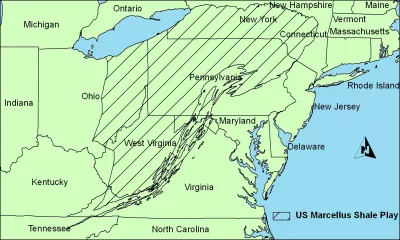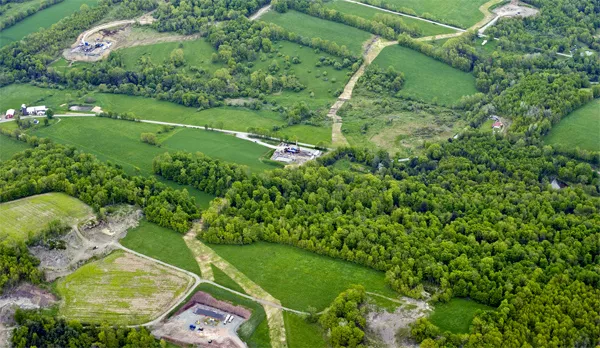As demand for fossil fuels rises, finding new sources of energy becomes increasingly important. With the innovation of 21st century drilling technologies, various reserves that were previously inaccessible are now prime areas for development.
The Marcellus Shale, estimated to contain over 1 trillion cubic feet of natural gas, is poised to become the next boom for the oil and gas industry. Centrally located in Pennsylvania and stretching out towards West Virginia, Ohio, and New York state, the Marcellus Shale and proposed drilling activities can profoundly change the area, both physically and economically. The 400 million-year-old sedimentary rock layer, located six to eight thousand feet beneath the earth's surface, was previously considered unreachable - but the development of horizontal drilling and hydro-fracking technology has allowed natural gas explorers to reach these depths.
This process is not without consequence. Hydraulic fracturing has already become an established practice in Texas, Colorado, Wyoming, New Mexico, Oklahoma, Louisiana, Kansas and more recently so in Ohio, West Virginia and Pennsylvania, even though its full environmental impacts have not been studied. With Pennsylvania's history of coal mining and oil drilling, the economic benefits of drilling are clear. However, natural gas extraction by hydro-fracking has begun without full consideration of its potential consequences, which include the contamination and loss of a community's most vital resource: its drinking water.

This website, created by the 2010 Senior Capstone Seminar of the Environmental Studies department of Swarthmore College, seeks to become a resource for many of the issues surrounding drilling of the Marcellus Shale. The lack of information on these recent developments has prevented a full analysis of the situation. We seek to consolidate various aspects of the drilling process to so that they may be accessible to the community. We invite you to explore the nature of hydro-fracking, the regulatory and leasing frameworks behind drilling and land usage, and the impacts and results of drilling so far. Only then can we fully understand the effects of drilling in the Marcellus Shale.
Header photo credit: Aerial view of the Jonah natural gas field, upper Green River valley, Wyoming, 2001.
Photograph courtesy Peter Aengst, The Wilderness Society Lighthawk and Sky Truth (http://www.skytruth.org/).




